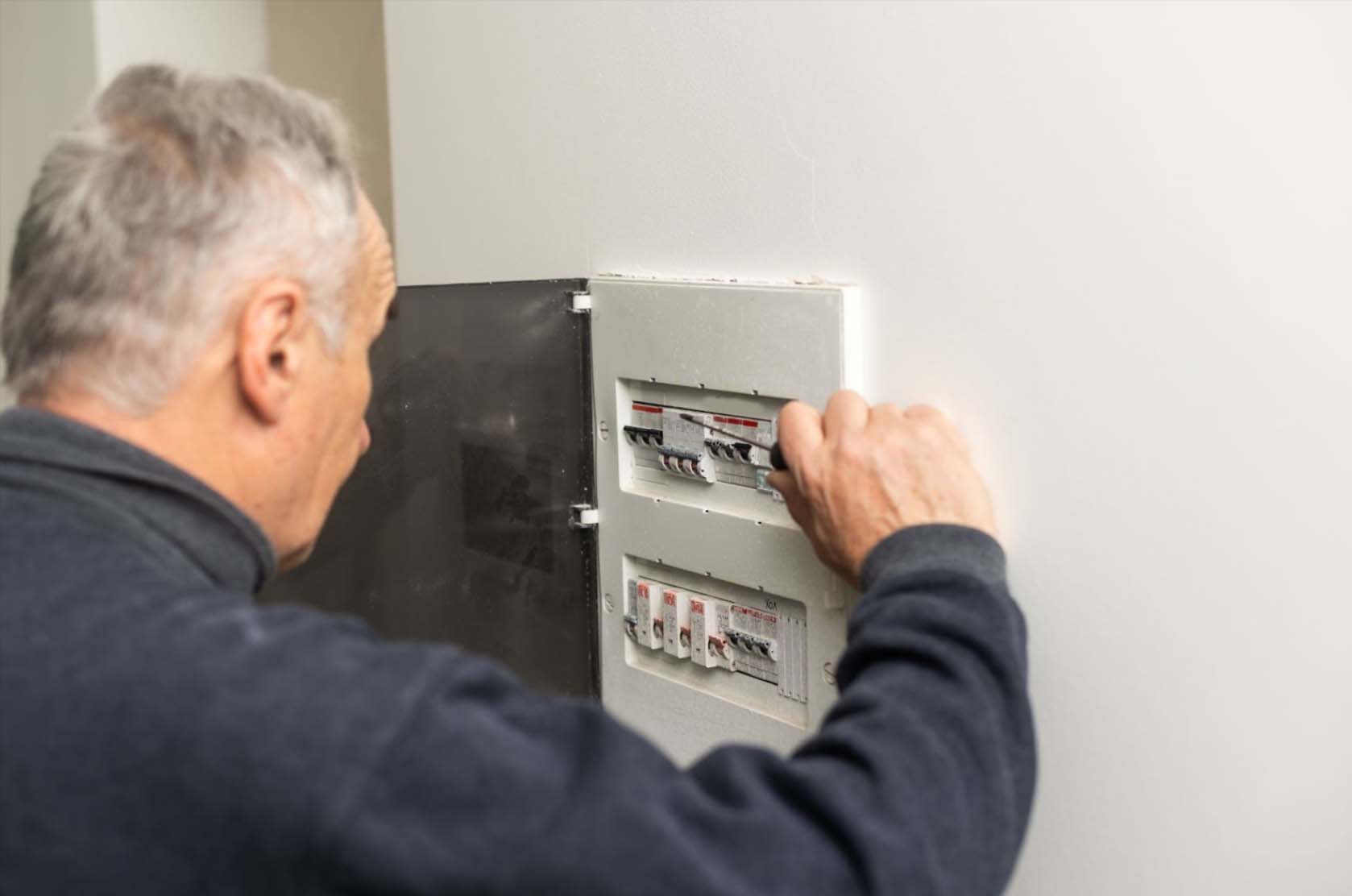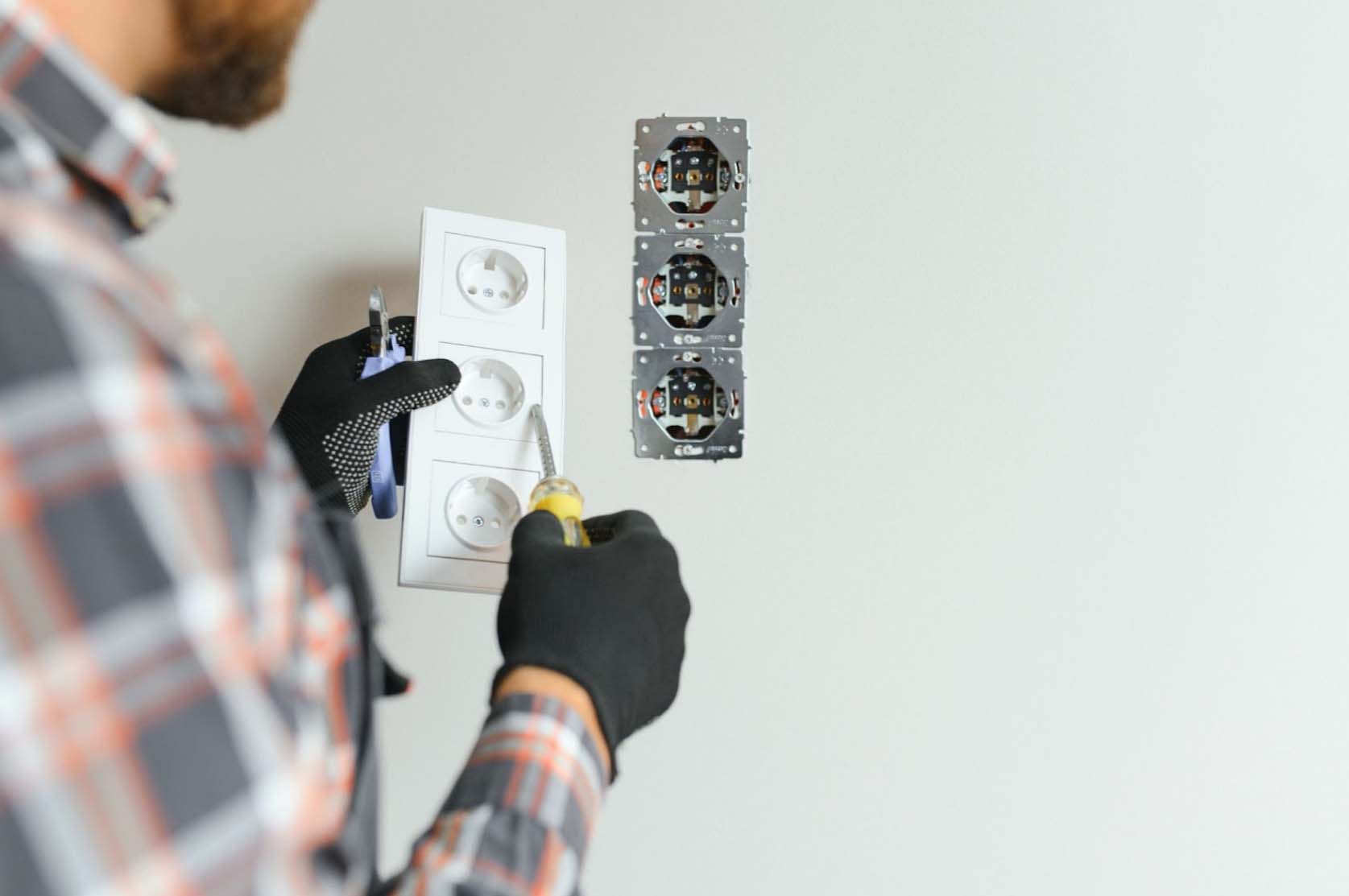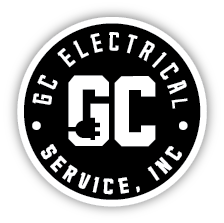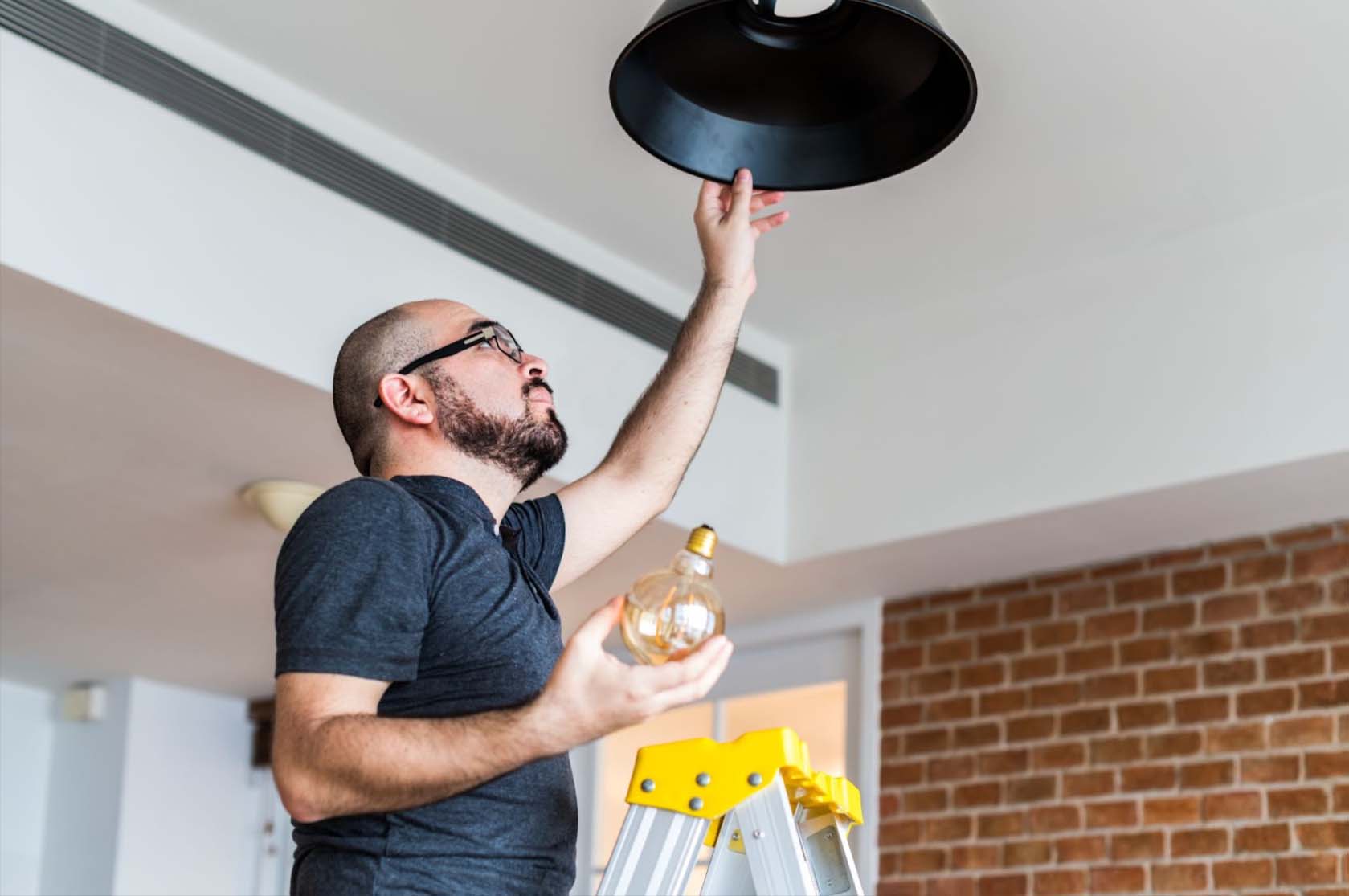Knowing how to handle common household electric repairs is invaluable for homeowners. It can save time, reduce costs, and increase your confidence in home maintenance. However, it's crucial to approach these repairs with caution due to the potential risks involved. A solid understanding of electrical safety and the proper techniques can prevent accidents and injuries. This article covers several typical electric repairs and how to manage them safely.
Understanding Electrical Safety Basics
Safety is the primary concern in electrical repairs. Before starting any electrical repair, taking basic safety precautions is essential. Always ensure the power to the circuit you're working on is turned off at the breaker box. Use a voltage tester to confirm that no electricity flows to the area you'll be working on. Wear protective gear, gloves, and safety goggles, and use tools with insulated handles. Proper safety measures prevent accidents and injuries, making your repairs successful and safe.
Repairing a Faulty Light Switch
Light switches are standard household components that often need repairs. If a switch isn't working correctly, it might be due to a loose connection or worn-out components. Signs of a faulty light switch include flickering lights or difficulty turning the lights on or off. You'll need a screwdriver, a voltage tester, and a new switch to repair or replace a light switch.
After turning off the power, remove the switch plate and use the voltage tester to ensure no current is present. Then, unscrew the switch from the electrical box, disconnect the wires, and replace it with a new one. A functional light switch enhances home lighting convenience and safety.
Fixing a Tripped Circuit Breaker
Circuit breakers protect homes from electrical overloads. When a breaker trips, it cuts off the power to prevent potential hazards. Common reasons for a tripped breaker include overloaded circuits, short circuits, and ground faults. To fix a tripped breaker, locate your home's electrical panel and identify the breaker in the off position. Flip it back to the on position to reset it. If the breaker trips again, you may need to redistribute the electrical load or consult a professional. Circuit breakers are vital for home electrical safety, preventing damage and potential fires.
Replacing a Broken Electrical Outlet
Outlets are prone to wear and may need replacement over time. Signs of a broken outlet include loose plugs, no power, or visible damage. To replace an outlet, gather tools such as a screwdriver, wire strippers, and a new outlet. Turn off the power to the outlet at the breaker box and use a voltage tester to ensure it's off. Remove the outlet cover and unscrew the outlet from the wall. Disconnect the wires from the old outlet, then connect them to the new one, matching them to the appropriate terminals. Secure the outlet back into the wall and replace the cover. Properly functioning outlets are essential for daily power needs and safety.

Troubleshooting and Fixing Flickering Lights
Flickering lights can be a nuisance and indicate deeper electrical issues. Common causes include loose bulbs, faulty light switches, or issues with the fixture itself. Start by tightening the bulb to see if that resolves the problem. If the light continues to flicker, check the light switch and connections. Ensure all wires are secure, and consider replacing the switch if necessary. If flickering persists, it may be a sign of a more significant problem, such as issues with the wiring or the electrical panel, which requires professional assistance. Steady lighting is crucial for comfort and productivity in your home.
Rewiring a Lamp
Rewiring a lamp is a simple yet essential skill for homeowners. It may need rewiring if your lamp flickers, won't turn on, or shows signs of wear. Gather tools like a screwdriver, wire cutters, wire strippers, and a new cord set. Start by unplugging the lamp and removing the socket to access the wiring. Disconnect the old wires and remove the damaged cord. Thread the new cord through the lamp's base and connect the wires to the socket terminals. Reassemble the lamp and test it. A well-wired lamp ensures safe and reliable lighting for your home.
Replacing a Ceiling Fan
Ceiling fans improve air circulation and comfort in a home. Over time, they may need replacement due to wear or to update the style. Signs that a ceiling fan needs replacement include wobbling, noise, or non-functioning parts. Ensure you have a sturdy ladder, a screwdriver, and the new fan ready. Turn off the power at the breaker and remove the old fan. Install the new fan following the manufacturer's instructions, ensuring all connections are secure. Test the fan to ensure it works correctly. A new ceiling fan can enhance home comfort and style, making your space more enjoyable.
Installing a New Light Fixture
New light fixtures can transform a room's ambiance. Whether updating an old fixture or installing a new one, the process can be straightforward with the right tools and precautions. Choose a fixture that complements your space, and ensure you have a screwdriver, wire nuts, and a voltage tester. Turn off the power to the existing fixture, remove it, and disconnect the wires. Connect the new fixture's wires to the corresponding wires in your ceiling, secure them in place, and attach any decorative elements. Test the fixture to ensure it's working correctly. A new fixture can brighten and modernize your home, enhancing function and style.
Replacing Light Bulbs With LED Alternatives
Switching to LED light bulbs can be a simple yet impactful upgrade for your home. LED bulbs are more energy-efficient, last longer, and provide better light quality than traditional incandescent bulbs. To replace a bulb, first ensure the power is off to avoid any risk of electric shock. Carefully remove the old bulb by unscrewing it from the fixture. Choose an LED bulb with the appropriate wattage and screw it in place. This small change can result in significant energy savings and improved lighting in your home.

Maintaining and Cleaning Electric Appliances
Regular maintenance and cleaning of electric appliances can extend their lifespan and improve efficiency. Dust and debris can accumulate on appliances, causing them to overheat or malfunction. Unplug the appliance before cleaning to ensure safety. Use a dry cloth or a vacuum with a brush attachment to remove dust from vents and surfaces. For deeper cleaning, refer to the manufacturer's instructions. Keeping your appliances clean helps them run more efficiently and reduces the risk of electrical issues.
Understanding Electrical Load and Proper Distribution
Proper electrical load management is crucial for preventing overloads and ensuring the safe operation of your home's electrical system. Each circuit in your home has a maximum load capacity, usually measured in amperes. Overloading a circuit can cause breakers to trip or wires to overheat, posing a fire risk. Distribute high-energy appliances across different circuits to balance the load. Use power strips with surge protectors to extend outlets safely. Understanding and managing your electrical load ensures the stability and safety of your home's electrical system.
Regular Inspection and Maintenance of Electrical Systems
Routine inspection and maintenance of your home's electrical systems can prevent major problems and ensure everything operates safely. Schedule regular checks of your circuit breakers, outlets, switches, and electrical panels. Look for signs of wear, such as frayed wires, loose connections, or discoloration around outlets. Test GFCI outlets monthly to ensure they're functioning correctly. Replace any damaged components promptly and consider having a professional electrician conduct an annual inspection. Regular maintenance keeps your electrical system in top condition, reducing the risk of failures and enhancing overall safety.
When to Seek Expert Help for Electrical Issues
While many homeowners can handle minor electrical repairs, certain situations require the expertise of a professional residential electrical service. Knowing when to call an electrician can prevent serious safety hazards and ensure your home's electrical system remains in optimal condition.
Complex Electrical Repairs
For complex electrical repairs such as rewiring a home, upgrading an electrical panel, or installing new circuits, it's best to hire a licensed electrician. These tasks involve intricate knowledge of electrical codes and standards, and improper handling can lead to severe electrical issues or even fires. Professional electricians have the training and experience to perform these tasks safely and correctly.
Persistent Electrical Issues
If you experience persistent electrical problems like frequent circuit breaker trips, flickering lights, or outlets that don't work, it's time to call a professional. These issues can indicate underlying problems, such as faulty wiring or overloaded circuits that require professional diagnosis and repair. Ignoring these signs can lead to more significant and potentially dangerous electrical failures.
Electrical Safety Concerns
Safety should always be a top priority when dealing with electricity. Contact a professional immediately if you notice burning smells, sparking outlets, or exposed wires. These signs can indicate severe electrical hazards that need immediate attention. An electrician can identify the source of the problem and take the necessary steps to ensure your home's electrical safety.
Electrical Inspections and Upgrades
Regular electrical inspections by a professional are crucial, especially in older homes. An electrician can assess your electrical system's condition, identify potential issues, and recommend necessary upgrades. Upgrading outdated electrical systems enhances safety and improves your home's energy efficiency and functionality.
Installing High-Power Appliances
Hiring a professional is essential when installing high-power appliances such as HVAC systems, electric stoves, or hot tubs. These appliances often require dedicated circuits and specific wiring configurations to operate safely. An electrician ensures the installation meets all electrical codes and safety standards, preventing potential electrical problems and providing reliable operation.
Calling a professional residential electrical service is crucial for complex repairs, persistent issues, safety concerns, regular inspections, and installing high-power appliances. Relying on a licensed electrician for these tasks ensures your home's electrical system's safety, efficiency, and longevity.
Check out the GC Electrical Service Inc. blog for more insights and expert advice on keeping your home's electrical system safe and efficient.


